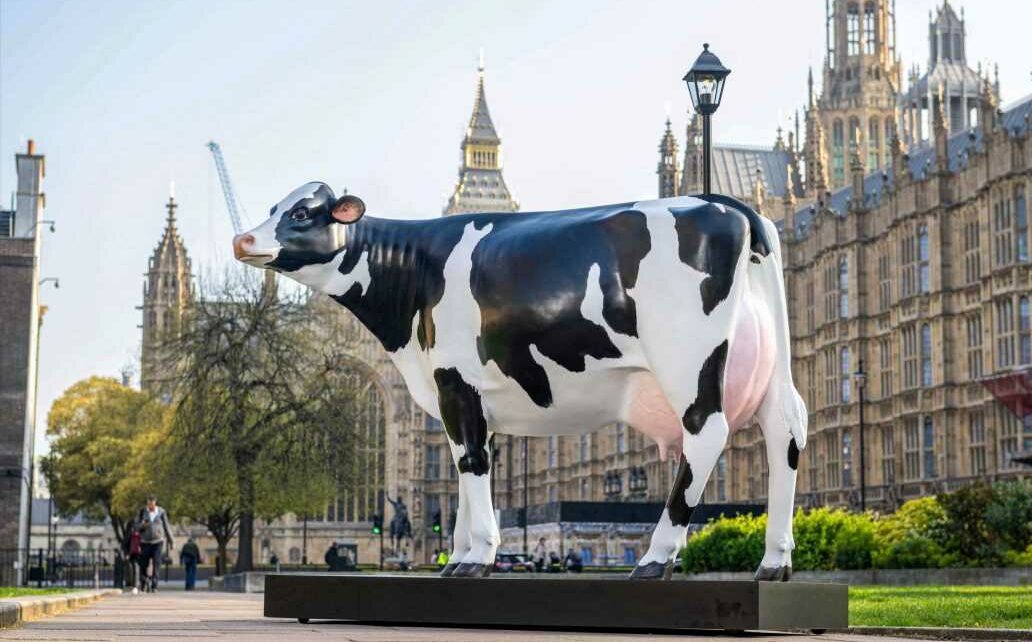A LIFE-SIZE ‘cow lamp’ has landed at the heart of Westminster – drawing attention to the potential of poo.
Passers-by double-taked at the unusual replica of a Victorian sewer lamp connected to a cow outside Parliament in central London.

The surprise installation outside the House of Commons aimed at drawing attention to the potential of on-farm livestock's waste and how it could be used as a renewable energy source.
Britain's largest dairy co-operative says it hopes to highlight the renewable energy potential of biogas, derived from food waste.
Their claims come amid environmental worries over the amount of sewage dumped into the country's waterways – with a thousand-plus dumps in recent years.
Yet biogas was once a staple of Victorian Britain after Birmingham engineer Joseph Edmund Webb patented a sewer gas destructor lamp fuelled by emissions from London’s drains.
Read More About Waterways

Warning as raw sewage spilt into swimming holiday spots 25,000 times in a year

Our picturesque seaside town is being ruined by vile sewage pumped into ocean
And now it has been claimed poo could help solve the UK’s energy security crisis should there be a nationwide strategy for anaerobic digestion of farm and food waste.
James Pirie, vice-president of logistics at Arla, the firm behind the cow lamp stunt, said: “Dairy farmers have the potential to play a major role in the future of the UK’s energy security, using natural resources to provide more energy independence.
“With better infrastructure and network support, Britain’s livestock sector, has the potential to turn nearly 91million tonnes of manure and slurry and 10million tonnes of food waste into 8billion cubic metres of biomethane – enough to power 6.4million homes.
“If we put the right policy changes in place and give our farmers the support they need, we can unlock the potential for even more farms to scale their use of renewable energy sources and ensure a more secure energy system for the future.”
Most read in The Sun

Becky Vardy strikes back in 'Wagatha Christie' row with surprise legal win

I was one of the hottest TV stars of the 00s but addiction turned my eyes yellow

Phillip Schofield accused of ‘intimidating behaviour’ on This Morning

People are only just realising the real flavour of Haribo's green gummy bears
The process of utilising anaerobic digestion is a bacterial breakdown of organic matter in the absence of oxygen – then producing biogas, which can be converted into energy.
Arla say a new national anaerobic digestion strategy could feed biogases into the gas grid and transport, while small-scale digestors provide energy for farms.
Stephen Temple, a farmer who supplies Arla, said: “Cow slurry has the potential to power communities across the UK and be used as a natural fertiliser to nourish the land we farm.
“Unfortunately, installation of an anaerobic digestor to make this happen is not cheap, and operation and maintenance have to be learnt, but the benefits soon outweigh the obstacles.
"We’re hoping that with the government’s help we can resolve the difficulties farmers face with grid connections, costly installations, and regulatory and planning issues so we can better utilise this invaluable energy source.”


Source: Read Full Article

